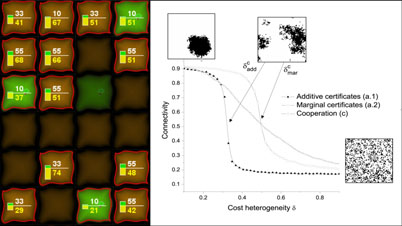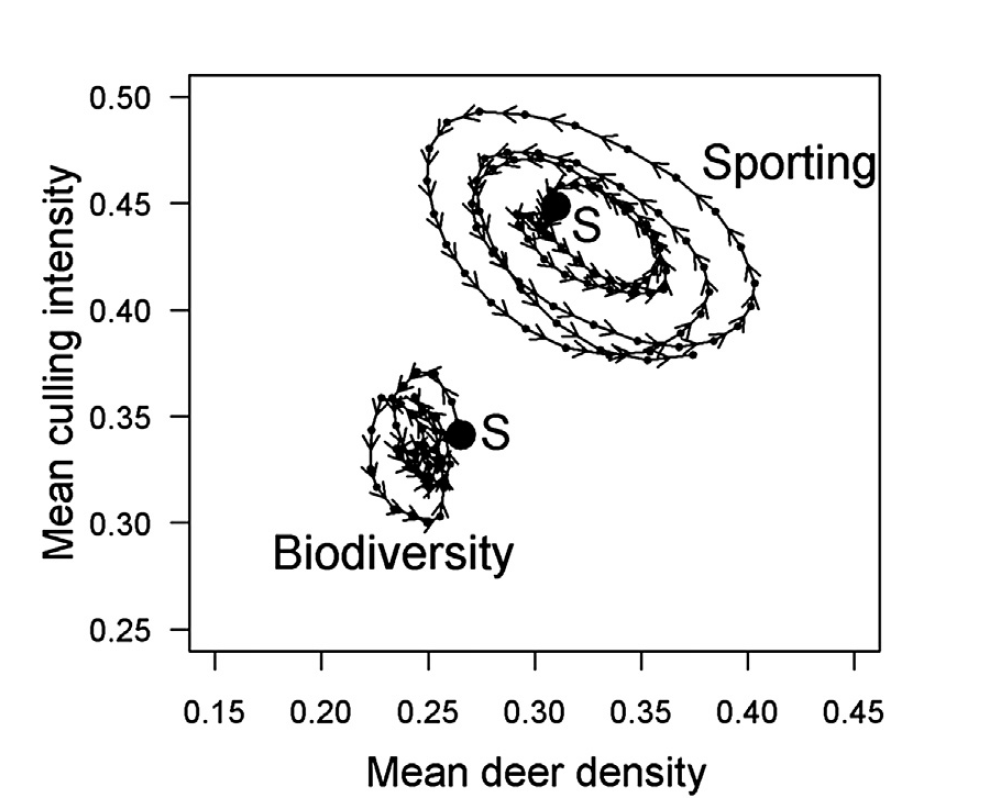Ecological-Economic Modelling
Most of the world's ecosystems are affected by human activities, be it indirectly e.g. through human-induced climate change
or directly e.g. through land clearing and harvesting of resources. The conservation of biodiversity and the maintenance of
ecosystem services therefore have an ecological as well as an economic dimension. Deriving strategies to conserve biodiversity
and use the resources of ecosystems in a sustainable manner requires the integrated consideration of both these dimensions.


Selected Publications
- Surun, C., Drechsler, M. (2018):
Effectiveness of tradable permits for the conservation of metacommunities with two competing species
Ecol. Econ. 147 , 189 - 196 10.1016/j.ecolecon.2018.01.016 - Drechsler, M. (2017):
Performance of input- and output-based payments for the conservation of mobile species
Ecol. Econ. 134 , 49 - 56 10.1016/j.ecolecon.2016.12.022 - Wätzold, F., Drechsler, M., Johst, K., Mewes, M., Sturm, A. (2016):
A novel, spatiotemporally explicit ecological-economic modeling procedure for the design of cost-effective agri-environment schemes to conserve biodiversity
Am. J. Agr. Econ. 98 (2), 489 - 512 10.1093/ajae/aav058 - Touza, J., Drechsler, M., Smart, J.C.R., Termansen, M. (2013):
Emergence of cooperative behaviours in the management of mobile ecological resources
Environ. Modell. Softw. 45 , 52 - 63 10.1016/j.envsoft.2012.03.015 - Drechsler, M., Meyerhoff, J., Ohl, C. (2012):
The effect of feed-in tariffs on the production cost and the landscape externalities of wind power generation in West Saxony, Germany
Energy Policy 48 , 730 - 736 10.1016/j.enpol.2012.06.008 - Drechsler, M. (2011):
Trade-offs in the design of cost-effective habitat networks when conservation costs are variable in space and time
Biol. Conserv. 144 (1), 479 - 489 10.1016/j.biocon.2010.10.001
